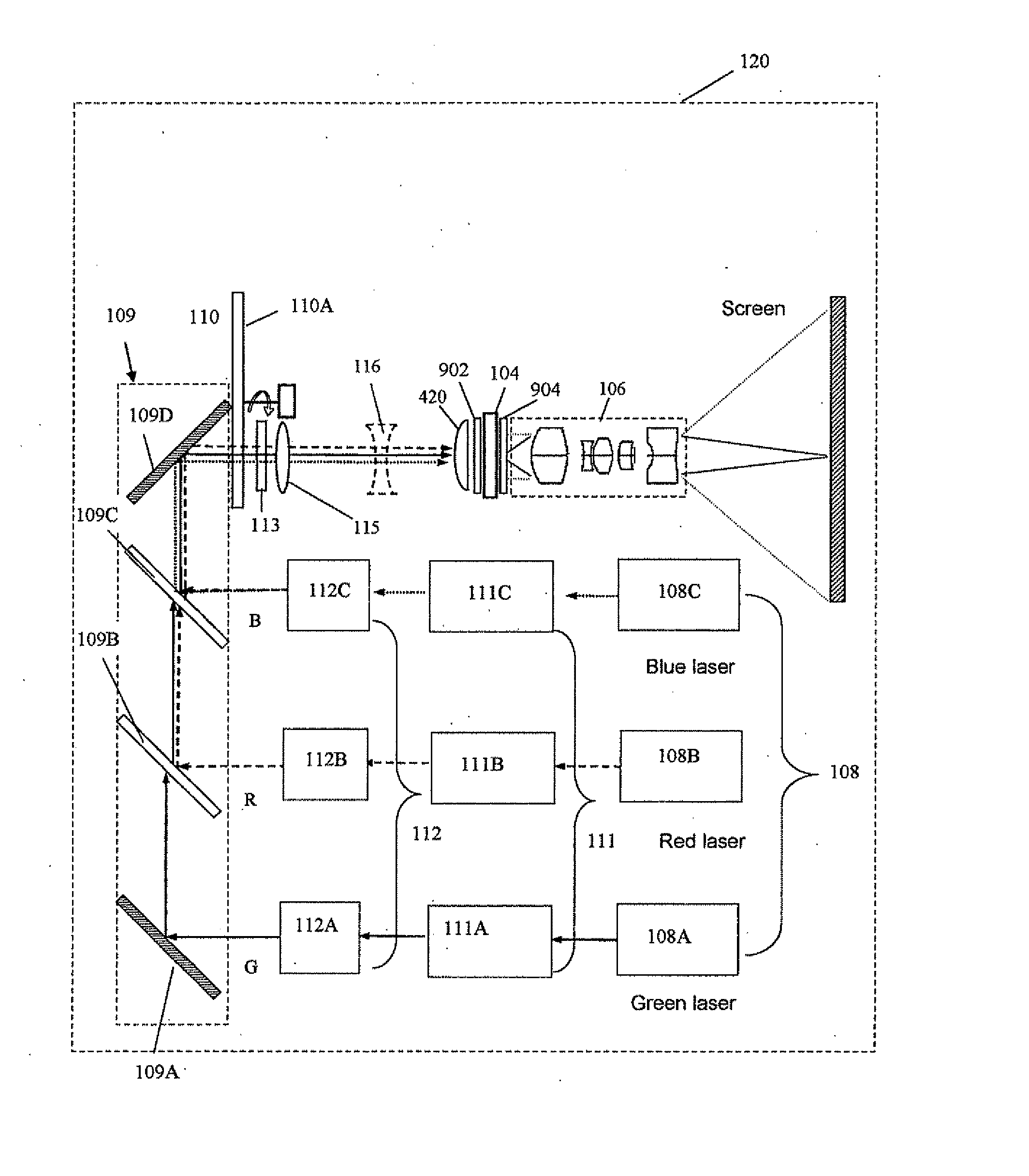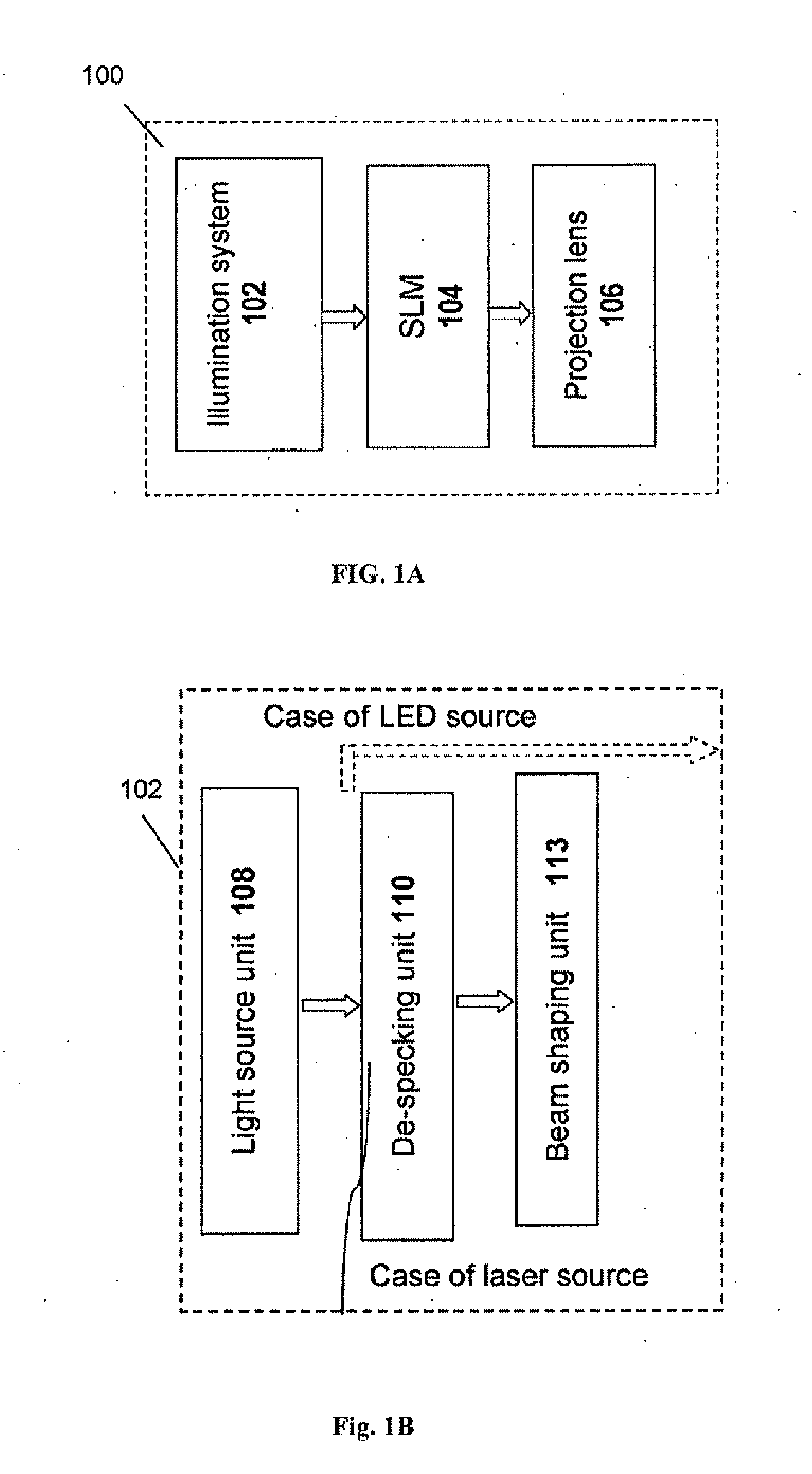Micro-projector
a technology of projection display and projector, which is applied in the field of compact mobile projection display system, can solve the problems of inability to properly display graphical html pages or high-resolution images/videos on display screens, and the small size of display screens used in handheld devices, etc., and achieves the effect of not being commercially available and displaying green laser diodes
- Summary
- Abstract
- Description
- Claims
- Application Information
AI Technical Summary
Benefits of technology
Problems solved by technology
Method used
Image
Examples
Embodiment Construction
[0067]Reference is made to FIG. 1A illustrating a schematic representation of an example of a compact projection display 100 of the present invention. The projection display includes an illumination system 102 for producing one or more light beams, e.g. multiple light beams of different wavelengths, typically primary colors (RGB) or YRGB or a wider set of colors; a spatial light modulator (SLM) system 104, which may be configured as LCD, T-LCOS, LCOS or DMD panel; and a projection optics, typically a lens unit 106. It should be noted that the projection display may include a separate SLM for each light illumination channel, or a common SLM for at least two channels.
[0068]To facilitate understanding, the same reference numbers will be used for identifying some of the components that are common in all the examples.
[0069]Reference is made to FIG. 1B illustrating a block diagram of the illumination system 102 comprising a light source unit 108 which in the present example has a number o...
PUM
 Login to View More
Login to View More Abstract
Description
Claims
Application Information
 Login to View More
Login to View More - R&D
- Intellectual Property
- Life Sciences
- Materials
- Tech Scout
- Unparalleled Data Quality
- Higher Quality Content
- 60% Fewer Hallucinations
Browse by: Latest US Patents, China's latest patents, Technical Efficacy Thesaurus, Application Domain, Technology Topic, Popular Technical Reports.
© 2025 PatSnap. All rights reserved.Legal|Privacy policy|Modern Slavery Act Transparency Statement|Sitemap|About US| Contact US: help@patsnap.com



